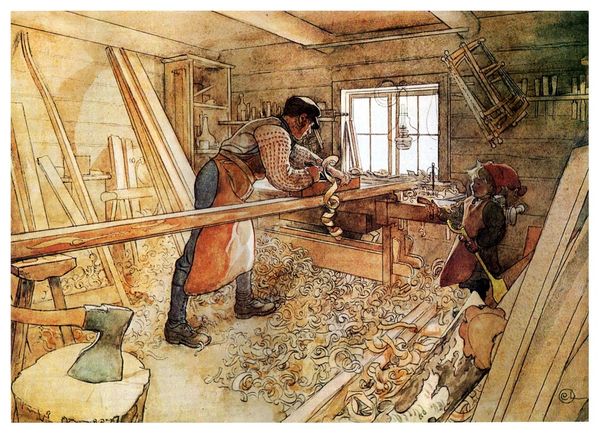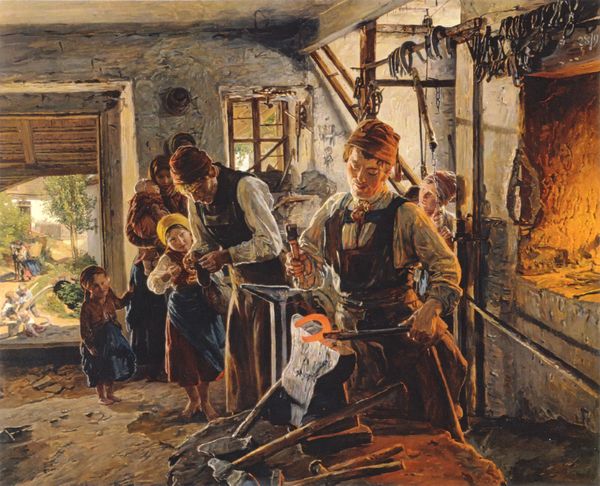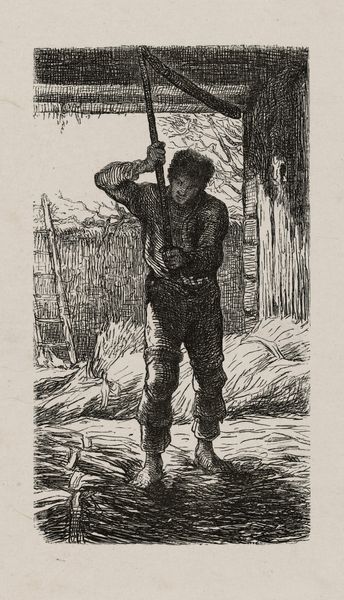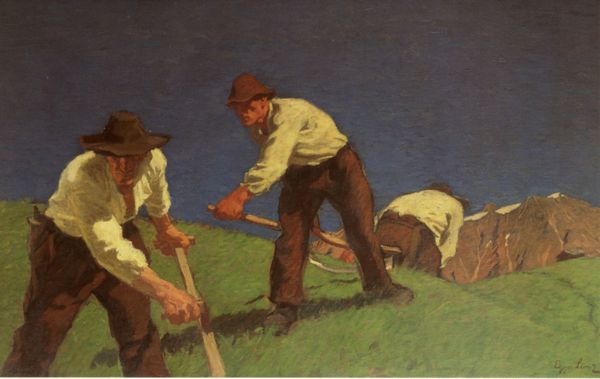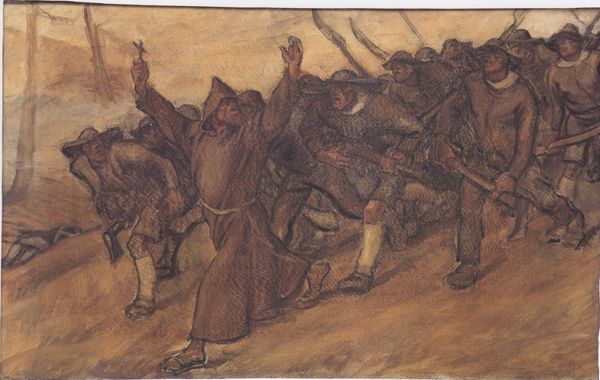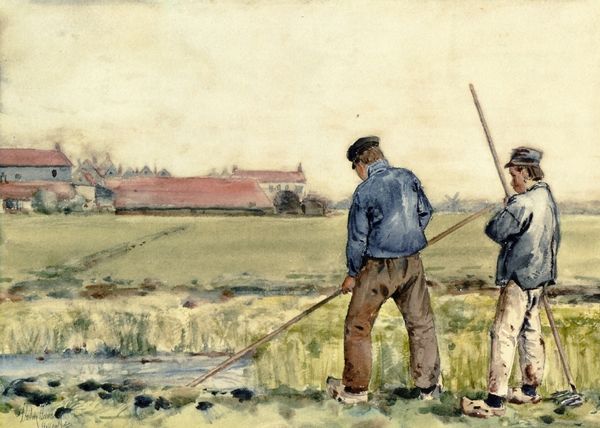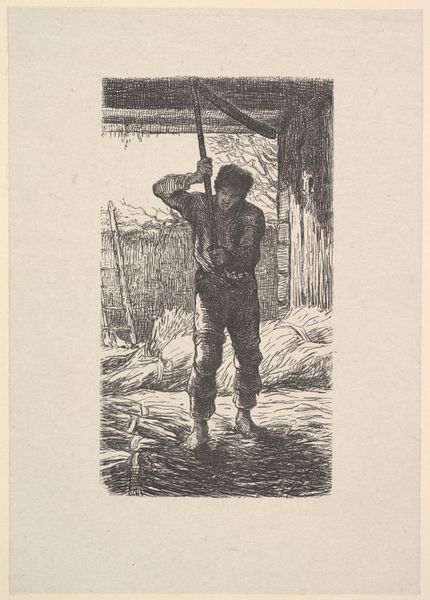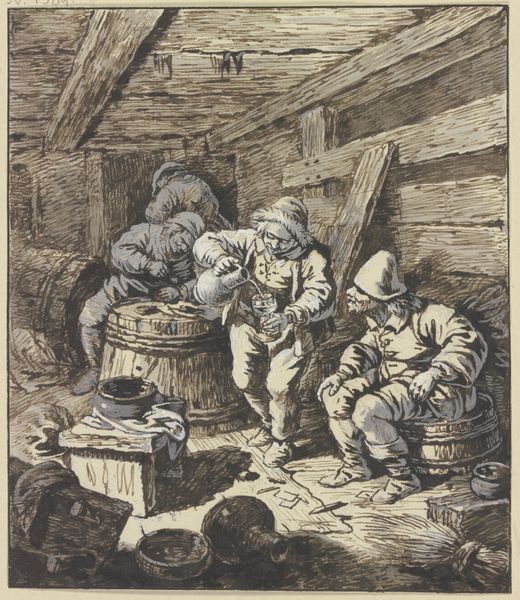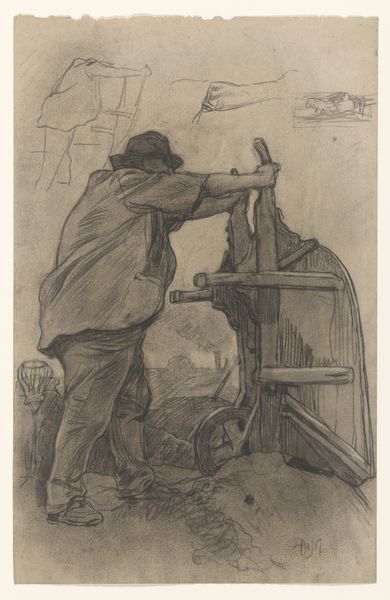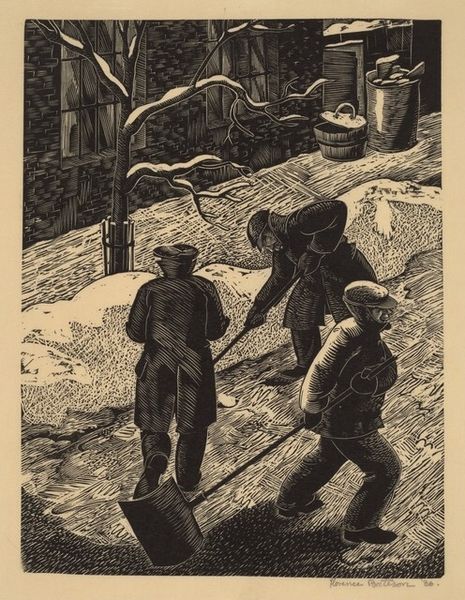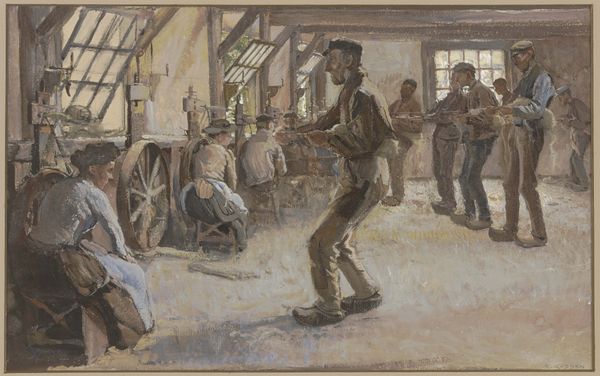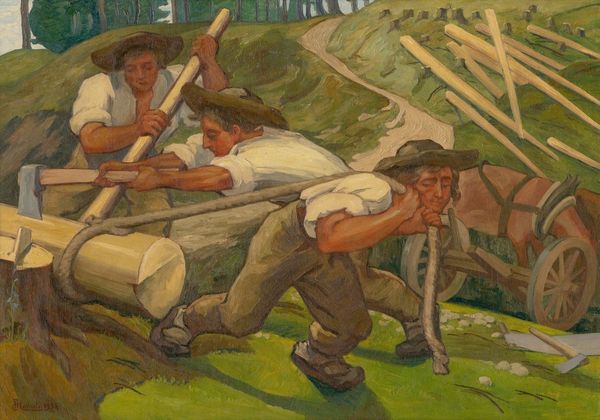
Copyright: Public domain
Carl Larsson made this watercolor, ‘The Manure Pile,’ sometime in the late 19th or early 20th century. It depicts a scene of rural life that on first glance seems charming. But consider the image more closely. What does it mean to picture a man using an elaborate surveying instrument to measure a manure pile? This was made in Sweden during a time of increasing urbanization and industrialization, and a nostalgia for rural life began to grow among some artists and intellectuals. Was Larsson poking fun at the pretension of applying scientific methods to the mundane aspects of farm life? Or perhaps he intended to elevate the dignity of labor by portraying it with such meticulous detail. To truly understand an image like this, we must delve into the social history of its time. What were the prevailing attitudes toward agriculture, class, and progress? Art historical scholarship allows us to explore these questions, drawing upon sources like letters, diaries, and newspapers to contextualize and interpret the visual language of art.
Comments
No comments
Be the first to comment and join the conversation on the ultimate creative platform.
